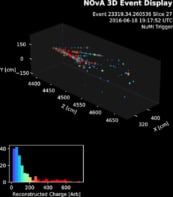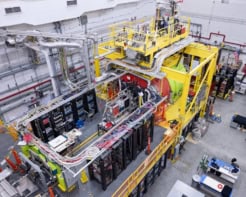The 2004 Wolf prize for physics has been awarded to Robert Brout and Francois Englert of the Université Libre de Bruxelles in Belgium and Peter Higgs of Edinburgh University for developing the theories which explain how fundamental particles can acquire mass in the Standard Model of particle physics. The prize, awarded by the Wolf Foundation in Israel, is often thought to be the most prestigious prize in physics after the Nobel prize.
There are four fundamental forces in nature: gravity, electromagnetism, and the strong and weak nuclear forces. Gravity and electromagnetism are both long range forces, whereas the strong and weak interactions only operate inside the nucleus. The Standard Model includes all of these forces except gravity. However, prior to the work of Brout, Englert, Higgs and others, the Standard Model could not explain why some particles have mass and others do not. In particular, it could not account for the fact that photons – the particles that “carry” the electromagnetic force – have no mass, while the analogous particles for the weak interaction do have mass. The particles carrying the weak force must have large masses to explain why it only acts over short distances.
In 1964, Brout and Englert proposed that the weak and electromagnetic interactions could be united by “spontaneous symmetry breaking”. This phenomenon was well known in condensed matter physics where it had been used to explain how, for instance, tiny unordered regions of a magnetic material could suddenly align themselves in a specific direction.
Higgs independently came to the same conclusion as Brout and Englert and showed that the particles that carried the weak force acquired their mass through interactions with an all-pervasive field that is now known as the Higgs field, and that the interactions occurred via particles that are widely known as Higgs bosons. Although these particles have not yet seen in an experiment, many physicists believe that they will be observed when the Large Hadron Collider (LHC) comes on-line at CERN in 2007.
The Prize, worth $100000, will be presented in Jerusalem in May, by the president of Israel, Moshe Katsav. The official citation states that the awards are made “for pioneering work that has led to the insight of mass generation, whenever a local gauge symmetry is realized asymmetrically in the world of sub-atomic particles”.



